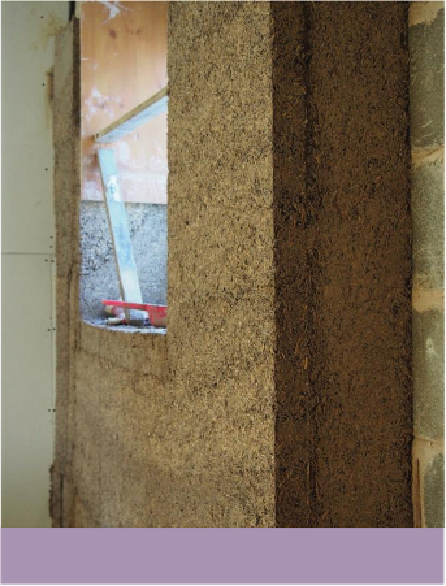Civil Engineering Reference
In-Depth Information
A completed wall of hempcrete solid-wall internal insula-
tion.
Hempcrete is cast against the face of the wall, either by spraying or by hand-placing using
shuttering. Aim to cast as much hempcrete as possible within the situation (and when it
comes to calculating the U-value achieved overall, remember that the thermal resistance
of the original masonry wall should also be factored in). Depending on the substrate and
the thickness being cast, the hempcrete is usually tied in to the original wall, with bolts or
screws fixed through, or cast into, the hempcrete. A reinforcing timber frame may be re-
quired in some instances, again depending on the thickness of hempcrete cast.
Hempcrete solid-wall insulation is especially useful where walls are of rubble stone or un-
even block construction, with irregular stones which create an uneven wall. The hemp-
crete, being 'loose-fill' in its freshly mixed state, leaves no large voids between the insula-
tion and the face of the stone. In contrast, a board-type insulation on an uneven wall carries
the risk of voids being created within the wall, which are then prone to interstitial condens-
ation as vapour passes through.

Search WWH ::

Custom Search